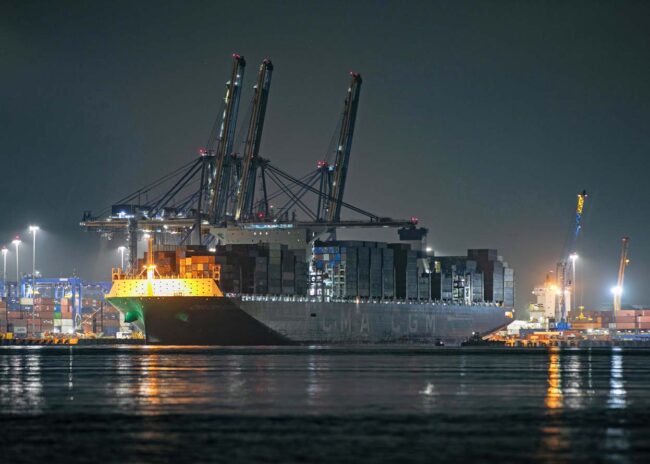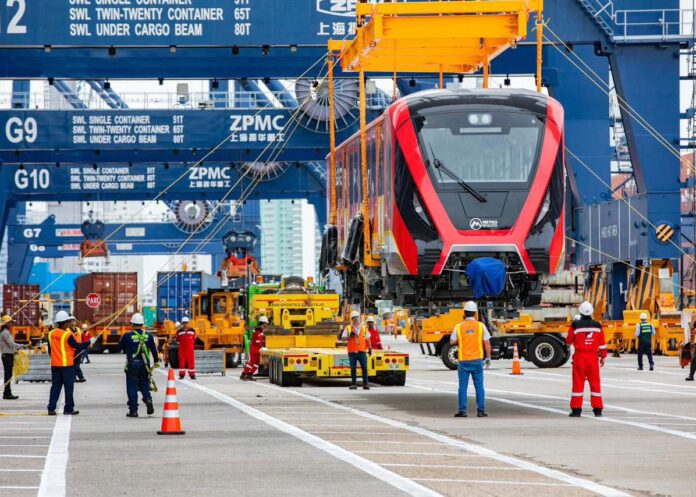The Bogotá Metro has reached a major milestone. On Tuesday, September 2, the first train of the city’s inaugural metro line arrived at the port of Cartagena after a month-long journey from China. Soon, it will be transported to the capital to begin static and dynamic tests – a symbolic moment for an infrastructure project envisioned for the capital since the 1970s.
Bogotá Mayor Carlos Fernando Galán confirmed the arrival on social media, declaring: “The first train of the Bogotá Metro is in Colombia. The ship has already arrived at the port.” His words underscore the significance of the delivery, which sets the stage for the first on-site testing of trains in Bogotá’s history.
The train, manufactured by the Railway Rolling Stock Corporation in Changchun, China, is part of a fleet of 30 units destined for Line 1 of the Bogotá Metro. Each train measures 135 meters in length, 2.9 meters in width, and 3.9 meters in height, with capacity to carry 1,800 passengers. Entirely electric, the trains will operate at an average commercial speed of 42.5 kilometers per hour, providing the capital with a modern, sustainable mass transit option.
The first unit left the port of Qingdao on August 3 and arrived in Cartagena 30 days later. Once in Bogotá, it will be transferred to the maintenance yard, where engineers will conduct tests on a 1,000-meter track to validate performance and integration with the city’s infrastructure.
Progress on the first metro line continues steadily. As of August 6, 2025, construction stands at 60 percent. Workers have completed seven kilometers of viaduct and 75 percent of complementary structures, while the maintenance yard and associated buildings are 74 percent finished. Station and access works currently register 16 percent completion.
Line 1, stretching 24 kilometers with 16 stations, will transform Bogotá’s urban landscape. It is designed to serve key localities including Bosa, Kennedy, Puente Aranda, Los Mártires, Antonio Nariño, Santa Fe, Chapinero, Teusaquillo, and Barrios Unidos. Once operational, it is expected to benefit 2.9 million residents directly, easing chronic congestion and improving connectivity across the city.
The manufacturing process for the trains began in mid-2024 and took around 10 months. Engineers simultaneously executed the assembly of car structures, painting, finishing, and installation of critical systems across all six cars, optimizing efficiency without compromising quality.
For Bogotá, the project has long symbolized aspirations for modern urban mobility. Decades of political delays and stalled plans had turned it into a pipe dream for many residents. Now, with the arrival of the first train, the city is one step closer to achieving a goal that once seemed out of reach.
If current timelines hold, the first Metro train will begin carrying passengers through Bogotá in March 2028. For a city long defined by gridlocked traffic and an overburdened bus system, the metro represents the next chapter in a broader mobility revolution — one that already includes the TransMilenio bus network, 540 kilometers of designated bicycle lanes, and car-free days twice a year. Today, Bogotá is not just imagining the metro era; it is watching it arrive, carriage by carriage, on the tracks of reality.


